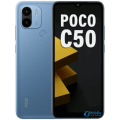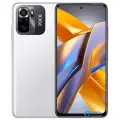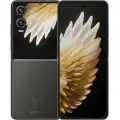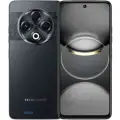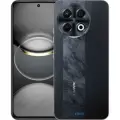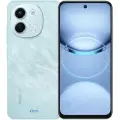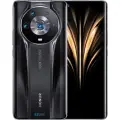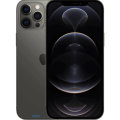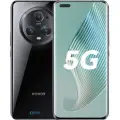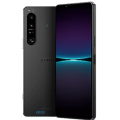Xiaomi 13 Ultra



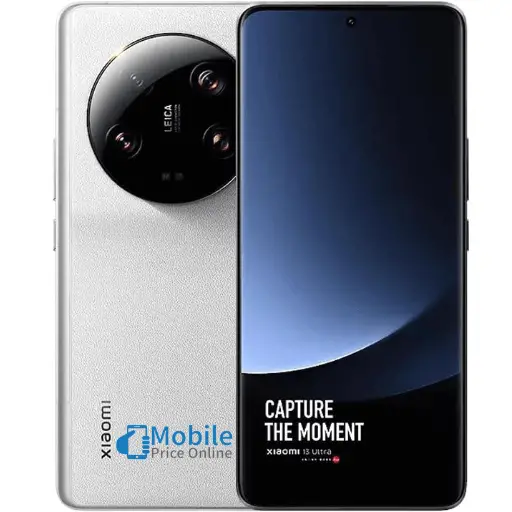
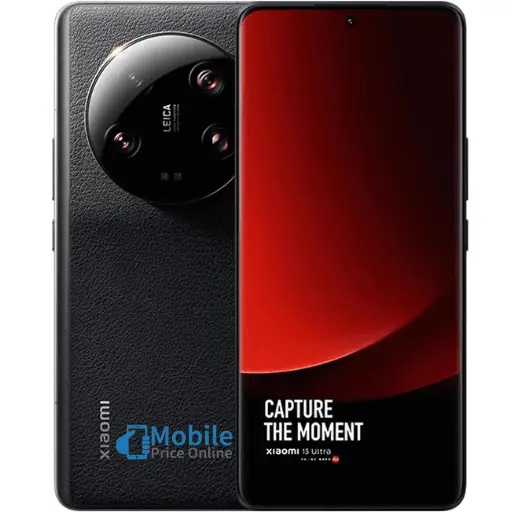
-
Released: 2023, April 21
-
OS: Android 13, MIUI 14
-
Display: 6.73" 1440x3200 pixels
-
Camera: 50MP 4320p
-
RAM: 12/16GB RAM Snapdragon 8 Gen 2
-
Battery: 5000mAh Li-Po
Full Specifications and Price in Bangladesh
General Info
| Announced | 2023, April 18 |
| Status | Available. Released 2023, April 21 |
| Brand | Xiaomi |
| Model | Xiaomi 13 Ultra |
| Color | Black, Olive Green, White, Orange, Yellow, Blue |
| Made by | China |
| Price | BDT. 1,32,000 |
Network
| Technology | GSM / CDMA / HSPA / EVDO / LTE / 5G |
| 2G Bands |
GSM 850 / 900 / 1800 / 1900 - SIM 1 & SIM 2 CDMA 800 |
| 3G Bands |
HSDPA 850 / 900 / 1700(AWS) / 1900 / 2100 CDMA2000 1xEV-DO |
| 4G Bands | 1, 2, 3, 4, 5, 7, 8, 12, 17, 18, 19, 26, 34, 38, 39, 40, 41, 42 |
| 5G Bands | 1, 3, 5, 8, 28, 38, 40, 41, 77, 78, 79 SA/NSA |
| Speed | HSPA 42.2/5.76 Mbps, LTE-A, 5G |
| GPRS GPRS (General Packet Radio Service) is a packet oriented mobile data service on the 2G and 3G cellular communication system's global system for mobile communications (GSM), Generally, GPRS is used for the purpose of wireless data transfer, such as sharing pictures and videos or browsing the Internet via a mobile phone connection. | |
| EDGE EDGE (Enhanced Data GSM Environment) is a wireless network technology generally considered the next step in the 2G network offers data transfer rates up to four times faster than ordinary GSM networks, Generally, EDGE is used for the purpose of wireless data transfer, such as sharing pictures and videos or browsing the Internet via a mobile phone connection. |
Body
| Dimensions | 163.2 x 74.6 x 9.6 mm (6.43 x 2.94 x 0.38 in) |
| Weight | 227 g (8.01 oz) |
| Build | Glass front (Gorilla Glass Victus 2), eco leather back, aluminum frame |
| SIM SIM (Subscriber Identity Module) is a small card that contains mobile network subscriber's account information. This allows the phone using the card to attach to a mobile network. The SIM card is most commonly associated with GSM and UMTS mobile networks. Moving a SIM card from one phone to another allows a subscriber to switch mobile phones without having to contact their mobile network carrier. SIM cards can also be used by a phone to store limited amounts of data, such as phone numbers and text messages. | Dual SIM (Nano-SIM, dual stand-by) |
Display
| Type Design Type called form factor refers to a mobile phone's size, shape, and style as well as the layout and position of major components of phone. There are three major form factors seen in mobile phones => bar phones, folding phones and sliding phones. | LTPO3 AMOLED capacitive touchscreen, 16M colors |
| Size | 6.73 inches, 108.9 cm2 (~89.5% screen-to-body ratio) |
| Resolution | 1440 x 3200 pixels, 20:9 ratio |
| Refresh Rate | 120Hz |
| Protection | Corning Gorilla Glass Victus |
| Pixel Density Pixel Density (PPI) is refers to the concentration of pixels on a particular display, measured in pixels per inch (ppi). Pixel density is calculated by dividing the diagonal pixel resolution of a display by its diagonal size, higher pixel density better display quality. | ~522 ppi density |
| Multitouch | |
| Features | 120Hz, Dolby Vision, HDR10+, 1300 nits (HBM), 2600 nits (peak) |
Platform
| Operating System OS => Every computer system run on a base software called Operating System (OS). Operating System controls all basic operations of the computer (such as smartphone, PDAs, tablet computers and other handheld devices). The Operating System allows the user to install and run third party applications (apps), apps are used to add new functionality to the device. | Android 13, MIUI 14 |
| Chipset Chipset is a group of integrated circuits designed to perform one or a more dedicated functions, often with real time computing constraints, Popular smartphones are equipped with more advanced embedded chipsets that can do many different tasks depending on their programming. | Qualcomm SM8550-AB Snapdragon 8 Gen 2 (4 nm) |
| CPU CPU (Central Processing Unit) mostly known as processors, CPU processes instructions in order to carry out certain functions that make your device operate properly. Processors are often described as the brain of computers, smartphones and tablets, Smartphones and tablets rely on processors to carry out their every task, Processors are an incredibly important factor in selecting any type of computing device, including your smartphone. | Octa-core (1x3.2 GHz Cortex-X3 & 2x2.8 GHz Cortex-A715 & 2x2.8 GHz Cortex-A710 & 3x2.0 GHz Cortex-A510) |
| GPU GPU (Graphics Processing Unit) is a single-chip processor designed to rapidly manipulate and alter memory to accelerate the creation of images in a frame buffer intended for output to a display, This includes things such as lighting effects, object transformations, and 3D motion. | Adreno 740 |
Memory
| Card Slot Memory Card Slot is a special slot for inserting a memory card. Memory cards allow you to expand the phone's built-in memory, A memory card (sometimes called a flash memory card or a storage card) is a small storage medium used to store data such as text, pictures, audio, and video, for use on small, portable or remote computing devices such as mobile phones, mp3 players, digital cameras. | No |
| RAM RAM (Random Access Memory) is a type of computer memory that can be accessed randomly, any byte of memory can be accessed without touching the preceding bytes that allows information to be stored and accessed quickly from random locations. RAM is the most common type of memory found in computer systems, smartphones, tablets and other electronic devices. | 12/16 GB |
| Internal Internal Storage is a data storage space (flash memory) mostly used in smartphones, tablets and other electronic devices where operating system, apps, music, photos, videos, files and other user data Is stored. | 256/512 GB / 1TB UFS 4.0 |
Main Camera
| Camera Resolution |
50.3 MP, f/1.9 or f/4.0, 23mm (wide), 1.0"-type, 1.6µm, multi-directional PDAF, Laser AF, OIS 50 MP, f/3.0, 120mm (periscope telephoto), 1/2.51", PDAF, OIS, 5x optical zoom 50 MP, f/1.8, 75mm (telephoto), 1/2.51", PDAF, OIS, optical zoom 50 MP, f/1.8, 12mm, 122˚ (ultrawide), 1/2.51", PDAF TOF 3D, (depth) |
| Camera Features | Leica lenses, Dual-LED flash, HDR, panorama |
| Video Resolution | 8K@24fps, 4K@30/60fps, 1080p@30/60/120/240fps, 720p@3840fps, gyro-EIS, Dolby Vision HDR 10-bit rec. (4K, 1080p) |
Selfie Camera
| Camera Resolution | 32 MP, f/2.4, 25mm (wide), 0.7µm |
| Camera Features | HDR, panorama |
| Video Resolution | 1080p@30fps |
Sound
| Alert Types | Vibration, MP3, WAV ringtones |
| Loudspeaker | Yes, with stereo speakers |
| Audio Jack |
Connectivity
| WLAN | Wi-Fi 802.11 a/b/g/n/ac/6e/7, tri-band, Wi-Fi Direct |
| Bluetooth Bluetooth is a wireless communications technology for exchanging data between mobile phones, headsets, computers and other network devices over short distances without wires, Bluetooth technology was primarily designed to support simple wireless networking of personal consumer devices. | 5.3, A2DP, LE, aptX HD, aptX Adaptive |
| GPS GPS The Global Positioning System is a satellite-based radio navigation system, GPS permits users to determine their position, velocity and the time 24 hours a day, in all weather, anywhere in the world, In order to locate your position, your device or GPS receiver must have a clear view of the sky. | GPS (L1+L5), GLONASS (L1), BDS (B1I+B1c+B2a), GALILEO (E1+E5a), QZSS (L1+L5), NavIC (L5) |
| NFC NFC (Near field communication) is a set of standards for smartphones and similar devices to establish peer-to-peer radio communications with each other by touching them together or bringing them into proximity, usually no more than a few inches. | |
| Infrared port | |
| FM Radio | |
| USB | USB Type-C 3.2, DisplayPort, OTG |
Features
| Sensors Sensors are electronic components that detects and responds to some type of input from the physical environment. The specific input could be light, heat, motion, moisture, pressure and location, The output is generally a signal that is converted to use in computing systems, a location sensor, such as a GPS receiver is able to detect current location of your electronic device. | Fingerprint (under display, optical), accelerometer, proximity, gyro, compass, color spectrum, barometer |
| Messaging | SMS(threaded view), MMS, Email, Push Email, IM |
| Browser Web Browser => a web browser is a software application used to locate, retrieve and display content on the World Wide Web, including Web pages, images, video and other files, The primary function of a web browser is to render HTML, the code used to design or markup webpages. | HTML5 |
| Java |
Battery
| Battery Type Battery Type => Cell phones run on various kinds of batteries depending on the manufacturer, phone size or shape and features. There are basically four types of cell phone batteries => Lithium Polymer, Lithium Ion, Nickel Metal Hydride and Nickel Cadmium. | Non-removable Li-Po |
| Battery Capacity Battery Capacity is a measure (typically in Amp-hr) of the charge stored by the battery, and is determined by the mass of active material contained in the battery. The battery capacity represents the maximum amount of energy that can be extracted from the battery under certain conditions. | 5000 mAh |
| Charging Wireless Charging (Inductive Charging) uses an electromagnetic field to transfer energy between two objects. This is usually done with a charging station. Energy is sent through an inductive coupling to an electrical device, which can then use that energy to charge batteries or run the device. |
90W wired, PD3.0, QC4, 100% in 35 min (advertised) 50W wireless, 100% in 49 min (advertised) 10W reverse wireless |
| Fast Charging | |
| Wireless Charging |
Xiaomi 13 Ultra Review: A Comprehensive Look at the Latest Flagship Smartphone
The Xiaomi 13 Ultra is a flagship smartphone that has been making waves in the tech industry since its release in 2023. With a sleek design, powerful processor, and advanced camera system, the Xiaomi 13 Ultra is a device that combines style and substance.
The phone boasts an impressive 6.81-inch AMOLED display with a resolution of 3200 x 1440 pixels. It runs on a Snapdragon 8 Gen 2 chipset and comes with 12GB or 16GB of RAM, making it one of the most powerful smartphones on the market. The Xiaomi 13 Ultra also features a quad-camera setup with a 108-megapixel primary sensor, making it a great choice for photography enthusiasts.
Overall, the Xiaomi 13 Ultra is a top-of-the-line smartphone that offers an impressive combination of design, performance, and features. It is a great choice for anyone looking for a high-end device that can keep up with their demanding needs.
Key Takeaways
- The Xiaomi 13 Ultra boasts a powerful processor and advanced camera system.
- It features a sleek design and an impressive AMOLED display.
- The phone is one of the most powerful smartphones on the market, making it a great choice for demanding users.
Design and Display
Screen Quality
The Xiaomi 13 Ultra features a 6.81-inch AMOLED display with a resolution of 3200 x 1440 pixels and a 120Hz refresh rate. The screen is protected by Corning Gorilla Glass Victus and supports HDR10+. The display provides vibrant colors and deep blacks, making it ideal for media consumption. The high refresh rate ensures smooth scrolling and animations, providing a better user experience.
Body and Build Quality
The Xiaomi 13 Ultra has a premium design with a glass back and an aluminum frame. The device is available in black and silver color options. The phone is slim and lightweight, making it comfortable to hold and use. The device has a fingerprint sensor under the display, which provides fast and accurate biometric authentication.
The device has a triple camera setup at the back, which is housed in a rectangular camera bump. The camera bump is slightly raised from the body, which may cause the device to wobble when placed on a flat surface. The device is not waterproof, which may be a downside for some users.
In conclusion, the Xiaomi 13 Ultra has a premium design and build quality, with a vibrant and smooth display. The device may not be waterproof, and the camera bump may cause the device to wobble, but these are minor issues that do not affect the overall user experience.
Performance
The Xiaomi 13 Ultra is powered by the Qualcomm Snapdragon 898 chipset, which is paired with 12GB of RAM. This combination makes for a smooth and speedy user experience. The device handles multitasking with ease, and apps load quickly.
Processor and Speed
The Snapdragon 898 is a flagship-level processor that delivers top-of-the-line performance. It is an octa-core processor with a clock speed of up to 3.5 GHz. The processor is based on a 5nm manufacturing process, which makes it more power-efficient than its predecessors.
The Xiaomi 13 Ultra also features UFS 4.1 storage, which is faster and more reliable than the previous generation. The device offers up to 512GB of internal storage, which should be more than enough for most users.
Gaming Performance
The Xiaomi 13 Ultra is a great device for mobile gaming. The Snapdragon 898 chipset and Adreno 730 GPU work together to deliver smooth and responsive gameplay. The device can handle even the most demanding games with ease.
The device also features a 120Hz refresh rate display, which makes for a more immersive gaming experience. The display is also HDR10+ certified, which means that games with HDR support will look even better on the Xiaomi 13 Ultra.
Overall, the Xiaomi 13 Ultra delivers top-of-the-line performance that should satisfy even the most demanding users.
Camera
The Xiaomi 13 Ultra features a quad-lens camera system that is designed to take photography to another level. The camera setup includes a 50-megapixel Sony IMX989 sensor with a variable aperture, optical image stabilization (OIS), and Leica’s Vario-Summicron lens. The camera system is capable of capturing stunning images with high levels of detail and color accuracy.
Photo Quality
The Xiaomi 13 Ultra’s camera system is capable of capturing stunning photos with high levels of detail and color accuracy. The 50-megapixel sensor allows for high-resolution images that are perfect for printing or cropping. The variable aperture and OIS help to reduce motion blur and improve low-light performance. The camera also features a 5x optical zoom and a 120x digital zoom, allowing users to capture images from a distance.
Video Quality
The Xiaomi 13 Ultra’s camera system is also capable of capturing high-quality videos. The camera can record 8K videos at 30 frames per second, allowing for high-resolution videos that are perfect for viewing on large screens. The camera also features a variety of video modes, including slow motion and time-lapse, allowing users to capture creative and unique videos.
Selfie Camera
The Xiaomi 13 Ultra features a 20-megapixel front-facing camera that is perfect for taking selfies. The camera features a wide-angle lens that allows users to capture more of the background in their photos. The camera also features a variety of beauty modes that can be used to enhance selfies and make them look more professional.
Overall, the Xiaomi 13 Ultra’s camera system is one of the best on the market. The camera’s quad-lens setup, high-resolution sensor, and advanced features make it a great choice for anyone who is serious about photography and videography.
Battery Life
The Xiaomi 13 Ultra is equipped with a 5000mAh battery, which is expected to last all day. The phone has a battery life of up to 13 hours and 51 minutes, according to the battery test conducted by DXOMARK.
Standby Time
The standby time of the Xiaomi 13 Ultra is impressive. The phone can last up to 22 days on standby, according to GSMArena. This means that users can leave their phones on standby for a long time without worrying about the battery life.
Charging Speed
The Xiaomi 13 Ultra comes with a 90W charger, which is one of the fastest chargers available in the market. The phone can be charged from 0% to 100% in just 30 minutes, according to DXOMARK. This is a significant improvement over the previous model, which took over an hour to charge.
In conclusion, the battery life of the Xiaomi 13 Ultra is excellent, and the phone can last all day on a single charge. The standby time is impressive, and the charging speed is one of the fastest in the market.
Software
The Xiaomi 13 Ultra runs on MIUI 14.0.4 based on Android 13 out of the box. The user interface is virtually identical to MIUI 13, with no significant changes.
User Interface
The user interface is clean and straightforward, with a customizable home screen, app drawer, and notification shade. The device features a dark mode, which can be enabled automatically or manually, and the UI is highly customizable, with a variety of themes, fonts, and icon packs available for download.
Additional Features
The Xiaomi 13 Ultra comes with a variety of additional features, including the ability to clone apps, dual apps, and second space. The device also features a built-in screen recorder, which can record audio from the device’s microphone or system sounds.
The Xiaomi 13 Ultra also has a Game Turbo mode, which optimizes the device’s performance for gaming. The device features a dedicated gaming mode, which can be activated by swiping down from the top of the screen and tapping the Game Turbo icon.
Overall, the Xiaomi 13 Ultra’s software is highly customizable and feature-rich, with a variety of additional features and optimizations for gaming. However, the lack of significant changes in the user interface may disappoint users looking for a fresh look and feel.
Connectivity
The Xiaomi 13 Ultra is a flagship smartphone that offers top-of-the-line connectivity options. This section will discuss the network performance, Bluetooth, and Wi-Fi features of the device.
Network Performance
The Xiaomi 13 Ultra supports 5G connectivity, allowing users to enjoy faster internet speeds and lower latency. The device also supports Sub-6 5G, which is a low-bandwidth version of 5G that offers better coverage than mmWave 5G. Users can expect reliable and fast network performance on the Xiaomi 13 Ultra.
Bluetooth and Wi-Fi
The Xiaomi 13 Ultra supports Bluetooth 5.3, which is the latest version of the wireless technology. This version of Bluetooth offers faster data transfer speeds and improved range compared to previous versions. The device also supports Wi-Fi 7, which is the latest version of Wi-Fi. Wi-Fi 7 offers faster download and upload speeds, improved range, and better reliability compared to previous versions.
Additionally, the Xiaomi 13 Ultra supports Wi-Fi 6e, which is a version of Wi-Fi that operates on the 6GHz band. This version of Wi-Fi offers faster speeds and less interference compared to Wi-Fi 6, which operates on the 2.4GHz and 5GHz bands. The device also supports NFC, which allows users to make contactless payments and transfer files between devices.
Overall, the Xiaomi 13 Ultra offers top-of-the-line connectivity features that allow users to enjoy fast and reliable network performance, as well as seamless wireless connectivity.
Price and Availability
The Xiaomi 13 Ultra was released in early 2023 and is currently available in select markets. As of November 2023, the device is not yet available in the United States, but it can be purchased through importers and resellers.
The device is available in two storage options: 256GB and 512GB. The 256GB variant is priced at approximately $1,100, while the 512GB variant is priced at approximately $1,400. These prices are slightly higher than the prices of other flagship devices from competing brands.
It is important to note that the Xiaomi 13 Ultra is not officially sold in all regions, and the availability and pricing may vary depending on the market. Prospective buyers should check with local retailers and importers for the latest information on availability and pricing.
Overall, the Xiaomi 13 Ultra is a premium device with top-of-the-line specifications and features, making it a worthy competitor to other flagship devices in the market. While the pricing may be slightly higher than some of its competitors, the device’s advanced camera capabilities and other features make it a compelling option for photography enthusiasts and power users alike.
Conclusion
The Xiaomi 13 Ultra is an impressive smartphone that offers top-of-the-line camera capabilities. Its main 50-megapixel camera with a Type-1 sensor delivers stunning image quality, while the 5x periscope zoom lens allows for close-up shots without sacrificing image quality.
The phone’s MIUI 14.0.4 based on Android 13 interface is virtually identical to MIUI 13, with few user-facing changes. However, the device’s 6.81-inch AMOLED display with a 120Hz refresh rate and HDR10+ support provides a smooth and immersive viewing experience.
In terms of performance, the Xiaomi 13 Ultra is powered by a Snapdragon 895 chipset and comes with up to 16GB of RAM and up to 512GB of storage. This makes it a powerful device capable of handling even the most demanding tasks with ease.
Overall, the Xiaomi 13 Ultra is an excellent smartphone for photography enthusiasts who want a device that can deliver stunning image quality. While it may not offer many significant changes compared to its predecessor, it is still a worthy upgrade for those who want the best camera capabilities possible on a smartphone.
Frequently Asked Questions
What are the Xiaomi 13 Ultra specs?
The Xiaomi 13 Ultra comes with a 6.81-inch AMOLED display with a resolution of 1440 x 3200 pixels. It is powered by a Qualcomm Snapdragon 895 chipset, with up to 16GB of RAM and up to 1TB of internal storage. The phone runs on MIUI 14 based on Android 13 and has a 5000mAh battery with 120W fast charging.
When was the Xiaomi 13 Ultra released?
The Xiaomi 13 Ultra was released on October 20, 2023.
What is included in the Xiaomi 13 Ultra camera kit?
The Xiaomi 13 Ultra features a triple camera setup on the back, including a 108-megapixel primary camera, a 12-megapixel ultra-wide camera, and a 5-megapixel telephoto camera. On the front, it has a 20-megapixel selfie camera. The camera kit also includes features like dual aperture, 8K video recording, and optical image stabilization.
Is the Xiaomi 13 Ultra available in a global version?
Yes, the Xiaomi 13 Ultra is available in a global version.
Where can I buy the Xiaomi 13 Ultra?
The Xiaomi 13 Ultra is available for purchase on Xiaomi’s official website, as well as on various online retailers and physical stores.
Does the Xiaomi 13 Ultra support the Google Play store?
Yes, the Xiaomi 13 Ultra supports the Google Play store.
Videos
Disclaimer Note
We do not guarantee that the information of this page is 100% accurate and up to date.


